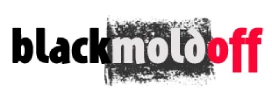When it comes to eliminating mold from your home, especially after water damage like floods or hurricanes, precision in creating your cleaning solutions is crucial for both effectiveness and safety.
Mold can not only damage the integrity of your home but also pose a significant health risk. Utilizing bleach, a common household disinfectant, is a widely recommended solution for killing mold on non-porous surfaces.
However, determining the correct bleach-to-water ratio is essential for ensuring the solution is strong enough to kill mold, yet safe to use.
Bleach for Mold Remediation
Bleach is known for its ability to sanitize and disinfect, making it a powerful ally in the fight against mold. When you prepare to tackle mold in your home, it is not just a matter of applying bleach directly to the affected area. A dilute solution is necessary to prevent damage to materials and to ensure your safety when using the chemical.
Experts such as those from Terry’s Cleaning & Restoration indicate that the perfect bleach-to-water ratio for effectively killing mold is typically 1 part bleach to 10 parts water. This dilution is strong enough to exterminate the mold without being overly harsh on surfaces or posing unnecessary risks to health.
CDC Guidelines for Mold Clean-Up
However, in contrast to the above recommendation, the Centers for Disease Control and Prevention (CDC) provides a slightly different guideline for mold clean-up after disasters. According to the CDC, a mixture of no more than 1 cup (8 ounces) of household laundry bleach per gallon of water is advised to kill mold on surfaces. This brings the ratio to a 1:16 part bleach-to-water solution.
Safe Application of Bleach Solutions
When applying the diluted bleach solution, using the right tools is important. A sponge or brush is normally recommended, as it allows you to thoroughly scrub the mold-affected area while avoiding spreading the mold spores. Always wear protective gear such as gloves, eye protection, and possibly a mask to prevent inhalation of spores or fumes.
Considerations Before Using Bleach
While bleach is an effective mold killer, it’s vital to keep in mind that it is only recommended for non-porous surfaces. Porous materials like carpets can absorb and retain moisture, potentially worsening the mold problem or damaging the material. Therefore, for porous surfaces, it is advisable to seek alternative mold-killing strategies or professional services.
Remember that bleach can also discolor fabrics and should not be mixed with other household cleaners, especially ammonia, as this can create toxic fumes.
Conclusion
In conclusion, the correct proportions for diluting bleach to kill mold may vary slightly depending on the source, but they typically range between a 1:10 and 1:16 ratio of bleach to water. It is imperative to get the concentration right and follow safety protocols during application to effectively combat mold and maintain a safe environment at home. If you are unsure or a large area is affected, it is best to consult a mold remediation professional.

